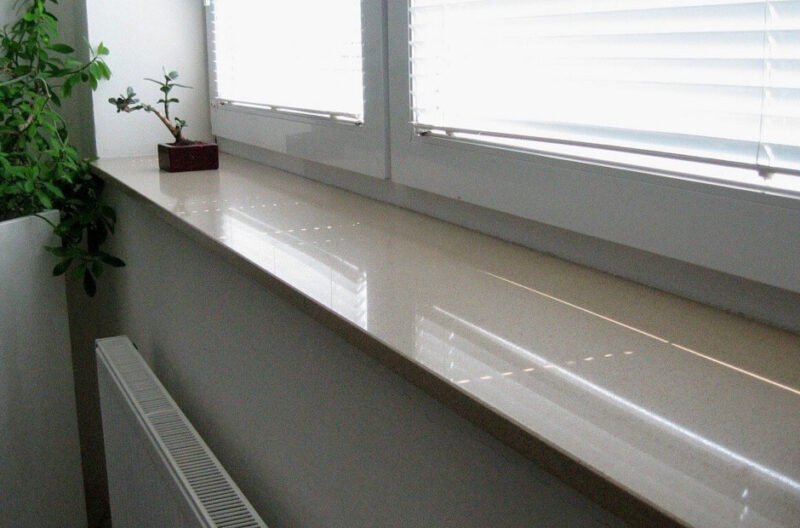
Marble sills, often overlooked yet crucial elements in architectural design, serve both functional and aesthetic purposes. These elegant features, typically found beneath windows or doorways, enhance the visual appeal of a space while offering practical benefits. Delve into the intricacies of marble sills, exploring their characteristics, uses, installation, and maintenance.
Characteristics of Marble Sills
Marble window sills, a metamorphic rock prized for its beauty and durability, form the foundation of marble sills. Their unique veining patterns and rich colors contribute to the luxurious ambience of any interior or exterior space. Common varieties of marble used for sills include Carrara, Calacatta, and Crema Marfil, each possessing distinct characteristics that cater to diverse aesthetic preferences.
In addition to its aesthetic appeal, marble boasts remarkable durability, capable of withstanding years of wear and tear without losing its luster. This resilience makes marble sills an ideal choice for high-traffic areas, ensuring longevity and minimal maintenance requirements.
Uses of Marble Sills
Marble sills serve multiple functions within architectural design. Primarily, they provide a smooth transition between the window or doorway and the surrounding wall, creating a visually pleasing transition while concealing any gaps or imperfections. Furthermore, marble sills help prevent moisture infiltration, acting as a barrier against water damage and mold growth.
Beyond their functional role, marble sills contribute to the overall aesthetic of a space, adding a touch of sophistication and luxury. Whether installed in residential or commercial settings, marble sills elevate the interior or exterior design, enhancing the property’s value and appeal.
Installation Process
The installation of marble window sills requires precision and expertise to ensure a seamless fit and proper alignment. The process typically begins with accurate measurements of the window or doorway opening to determine the dimensions of the sill. Once the dimensions are established, the marble slab is cut to size using specialized tools and techniques.
Next, the marble sill is carefully positioned and secured using adhesive or mortar, ensuring a stable and level installation. Attention to detail is paramount during this step to achieve a flawless finish and prevent any gaps or unevenness.
After the installation is complete, grout may be applied to fill any remaining gaps between the sill and the surrounding wall, further enhancing the aesthetic appeal and structural integrity of the assembly.
Maintenance and Care
Proper maintenance is essential to preserve the beauty and functionality of marble sills over time. Regular cleaning with a mild detergent and water solution helps remove dirt, dust, and debris, preventing buildup and discoloration. Avoid harsh chemicals or abrasive cleaners, as they may damage the marble’s surface and finish.
In addition to cleaning, periodic sealing is recommended to protect the marble against stains and moisture penetration. A high-quality marble sealant creates a protective barrier that repels liquids and facilitates easier cleaning and maintenance.
It’s also advisable to avoid placing heavy or abrasive objects directly on the marble sill, as this may cause scratches or damage to the surface. Use coasters or felt pads beneath objects to prevent scratching and maintain the marble’s pristine appearance.
Environmental Benefits of Marble Sills
Marble sills also contribute to environmental sustainability. Marble is a natural stone, and its extraction and processing have a relatively low environmental impact compared to synthetic materials. Furthermore, marble sills can be recycled or repurposed, reducing waste and promoting eco-friendly building practices.
The longevity of marble also means that replacements are infrequent, leading to less consumption of resources over time. This durability makes marble an environmentally responsible choice for construction and renovation projects.
Customizing Marble Sills
Customization options for marble sills are vast, allowing for a tailored approach to match any design vision. Marble can be cut and polished into various shapes and sizes, accommodating different architectural styles and preferences. From traditional rectangular sills to more intricate designs with rounded edges or decorative elements, customization adds a unique touch to each installation.
Different finishes, such as polished, honed, or brushed, can further enhance the marble’s appearance, providing options to suit both modern and classic aesthetics. Customization ensures that marble sills not only fit perfectly but also align with the overall design theme of the space.
Comparing Marble to Other Materials
When selecting materials for sills, comparing marble to alternatives like granite, limestone, or synthetic options reveals the unique advantages of marble. While granite offers similar durability, it often needs more refined elegance of marble’s veining patterns. Limestone, though aesthetically pleasing, tends to be less durable and more susceptible to damage.
Synthetic materials, while versatile, cannot match the natural beauty and timeless appeal of marble. The distinct characteristics of marble make it a preferred choice for those seeking a blend of luxury and functionality.
Cost Considerations
The cost of marble sills can vary based on factors such as the type of marble, customization requirements, and installation complexity. While marble is generally more expensive than some other materials, its long-term benefits often justify the initial investment.
Considering the durability, aesthetic appeal, and potential increase in property value, marble sills offer a cost-effective solution in the long run. Careful budgeting and selection of the correct type of marble can ensure that the investment aligns with both design goals and financial considerations.
Marble sills are versatile architectural elements that combine aesthetic elegance with practical functionality. From their distinctive characteristics to their diverse uses and installation process, marble sills enhance the beauty and value of any property.
By understanding the importance of proper maintenance and care, property owners can ensure that their marble sills retain their beauty and durability for years to come. Whether adorning residential homes, commercial buildings, or historic landmarks, marble sills stand as timeless symbols of craftsmanship and sophistication.









